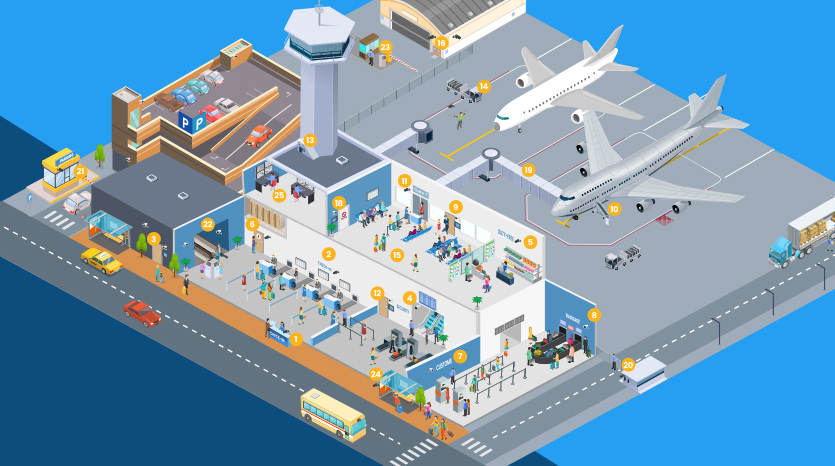
The use of facial biometrics and facial recognition in airports is becoming more and more commonplace.
Biometric technology and real-time facial recognition were already priorities for the airport industry before COVID put the brakes on air travel. But it has taken on a new urgency after this past summer of travel chaos, when staffing shortages meant fliers were standing in long queues to do everything from check bags to board the plane.
The Transportation Security Administration (TSA) has been quietly testing facial recognition technology for passenger screening at 16 major U.S. airports — from Washington D.C. to Los Angeles — and hopes to expand it across the United States as soon as next year. As of July 2022, the U. S. Customs and Border Protection agency (CBP) had deployed this technology to 32 airports for travelers leaving the U.S. and all airports for travelers entering the country.
This system’s been in operation for domestic travelers in the UK for more than a decade. More recently, British Airlines introduced self-boarding gates and is rolling out facial recognition for its international travelers. This system is for general passenger security screening. But passenger boarding is just one use casein which facial recognition could be leveraged by airports to improve security, passenger safety, and the overall travel experience.
This is why we created the infographic below which outlines 25 different use cases for facial biometrics/recognition. There are basically three different types of use cases where facial recognition technology offers significant advantages over manual, human-based security measures, including:
1. One-to-One Verification
This is being typically used at security checkpoints within airports around the globe. You step up to the travel document checker kiosk and stick your ID into a machine. Then you look into a camera for up to five seconds and the machine compares your live photo to the one it sees on your ID. They call this a “one-to-one” verification system, comparing one face to one ID. Even though the software is judging if you’re an impostor, there’s still a human agent there to make the final call (at least for now). Based on most accounts, the system is working well and many passengers like the speed and accuracy of the system.
2. Real-Time Watchlist Alerting
Because of terrorist and other security threats associated with air travel, it’s imperative that airports monitor their facilities to identify persons of interest in real-time for anyone on a watchlist. Live facial recognition software, which can be embedded within an airport’s existing camera infrastructure, enables security teams to rapidly respond to threats while protecting the privacy of bystanders. The challenge with real-time watchlist alerting is that the facial recognition systems must work when there are crowds, when the cameras are positioned high on a wall or ceiling, when individuals are not looking directly at the camera, or when passengers are wearing masks or other face coverings. Unlike one-to-one verification, this type of facial recognition is many-to-many where the system is scanning many people and comparing that to a watchlist that may contain tens of thousands of individuals.
3. Touchless Access Control
A third category of facial recognition that is emerging is using facial recognition to control access to specific locations within an airport. For example, airports can use facial recognition to identify authorized employees who are given access into sensitive areas of the airport such as aircraft hangers, fuel storage, specialized equipment, and the runways themselves. Similar to a watchlist, the airport would have a list (and pictures) of authorized employees and when these employees approach a sensitive zone, they are given explicit physical access – but anyone else would not. And unlike traditional keycards and fobs, which can be lost, stolen or shared, biometric-based access control facilitates touchless travel and limits the spread of pathogens.
Our new infographic shows how airports can leverage facial recognition to create a layered approach to commonplace physical security strategies, including protecting airports entrances, sensitive interior areas, and the airport’s perimeter. Check out the interactive version of this infographic here.

 Vision Al Blog
Vision Al Blog


